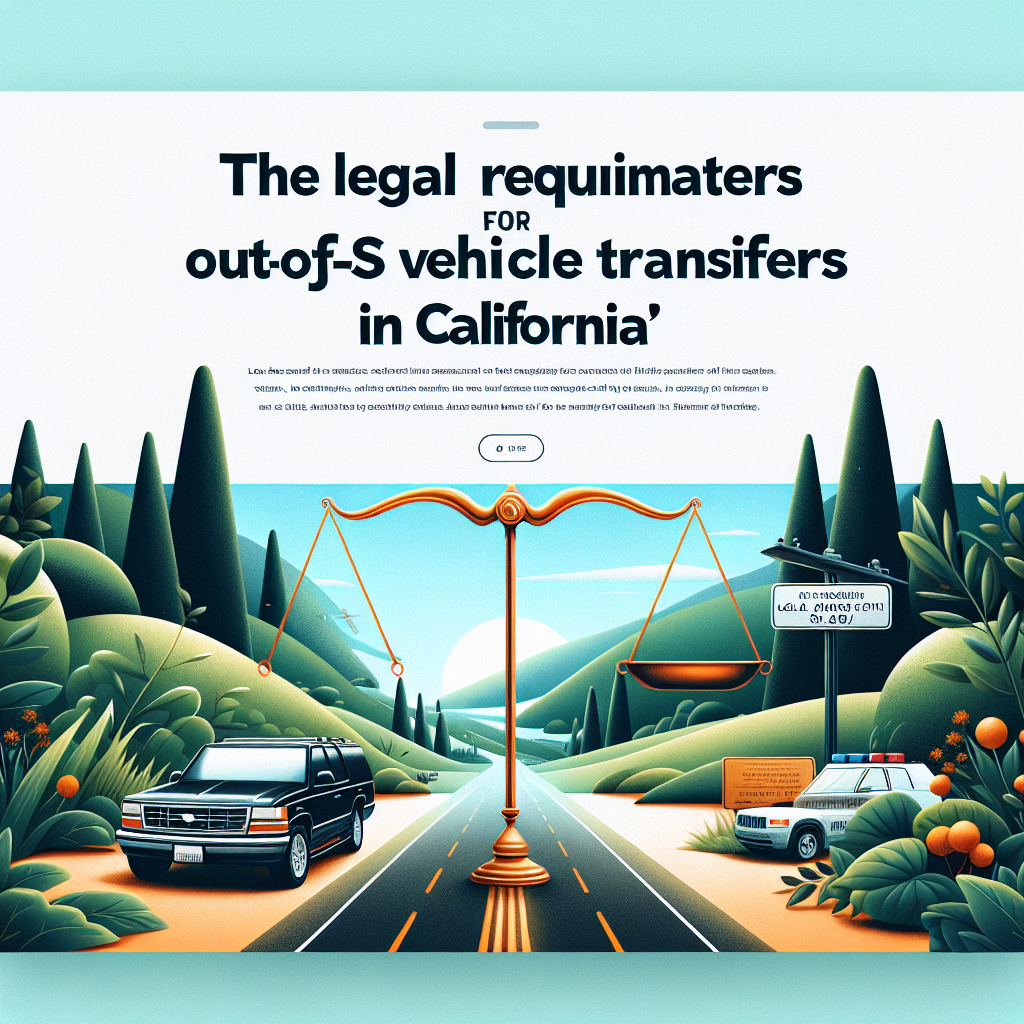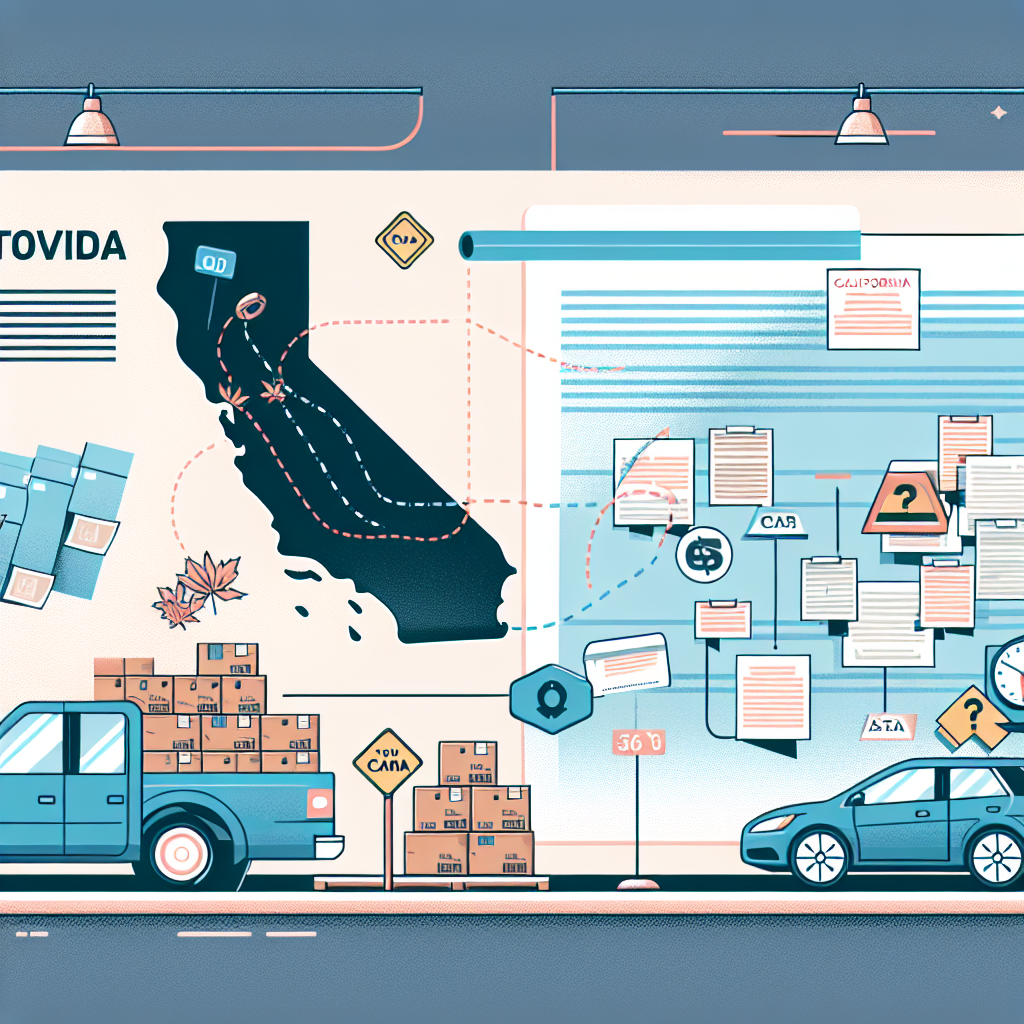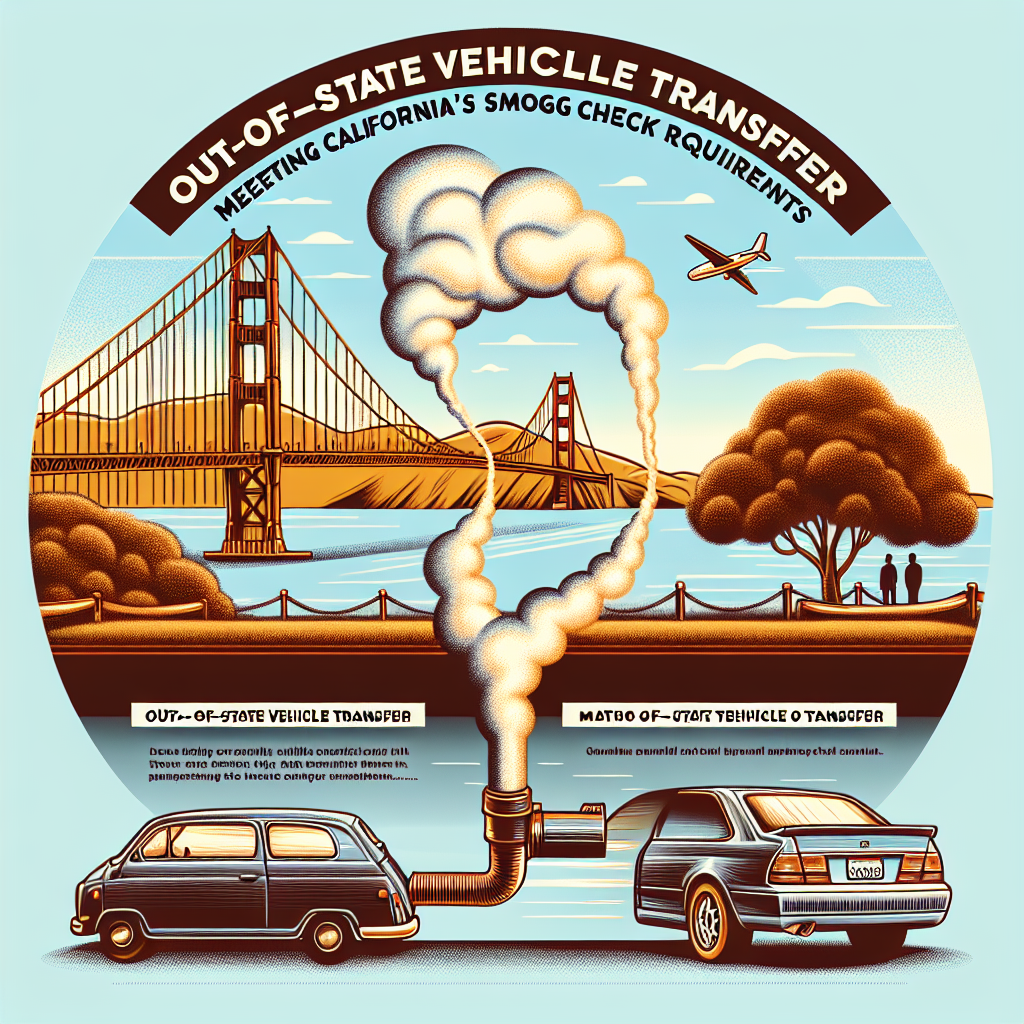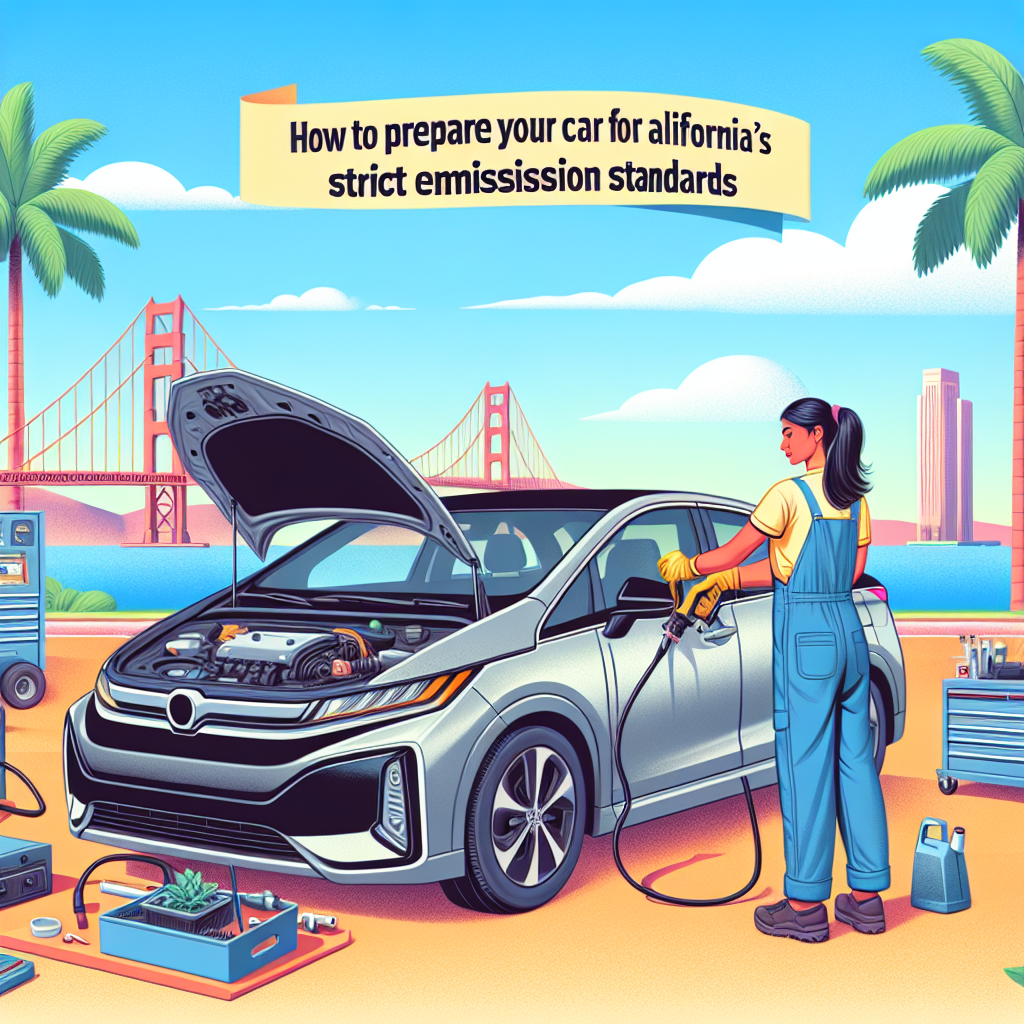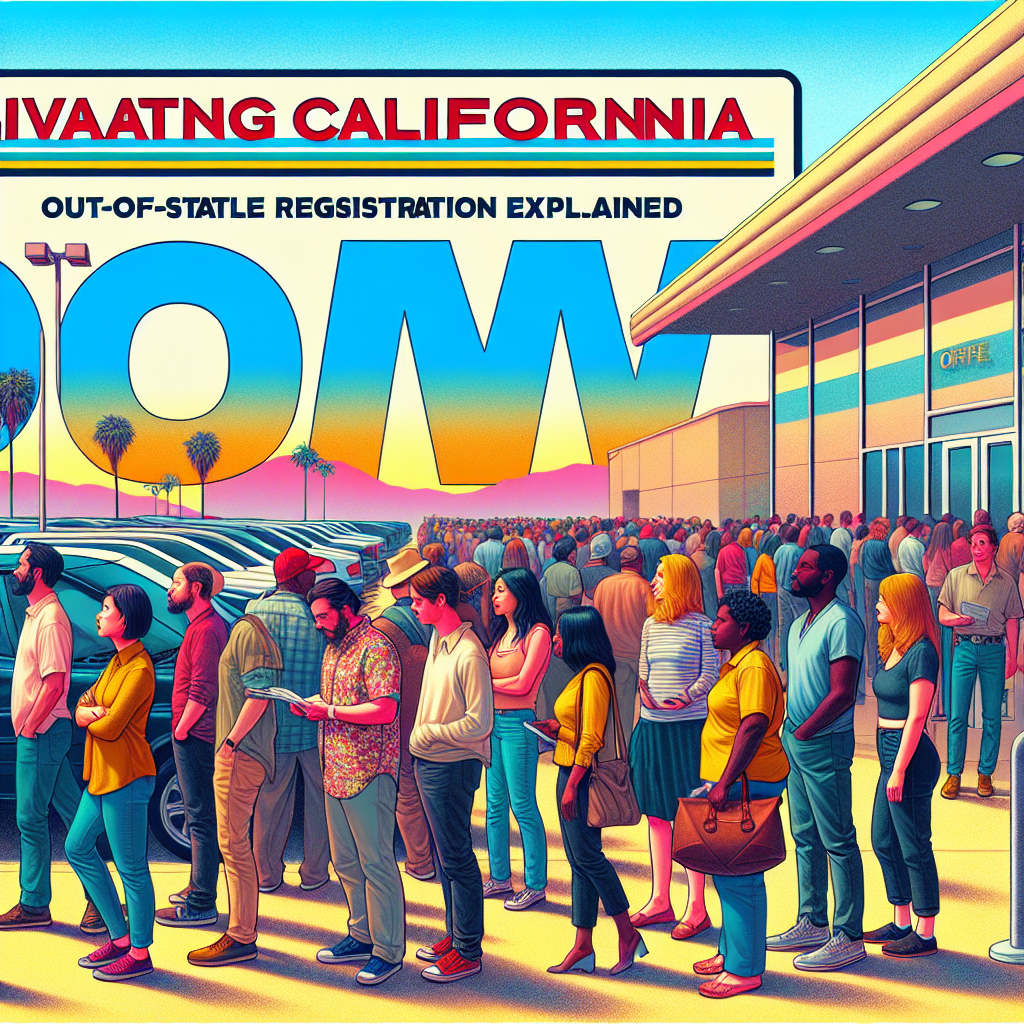Out‑of‑State Vehicle Transfer: A Comprehensive Guide for New California Residents
Welcome to California! Here, the sun shines brightly, the scenery is stunning, and the vehicle rules are… well, unique. As a new resident, you’re probably super excited about exploring all the cool places in the state. But before you hit the road, there’s an important task you need to do: transfer your out-of-state vehicle registration. Don’t worry! This guide will show you how to do it step by step.
Understanding California Vehicle Registration Requirements
In California, it’s important to follow the vehicle registration laws so you’re driving legally. Once you become a resident, you have to complete the transfer process within 20 days. If you don’t register your out-of-state vehicle in time, you might have to pay fines, and nobody wants that. Plus, mixing traffic jams with DMV fines is no fun!
Step-by-Step Process for Out-of-State Vehicle Transfer
1. Gather Necessary Documents
Before you go to the DMV, make sure you have:
- Proof of Ownership: This could be your current title or registration from your previous state.
- Smog Certification: Most vehicles will need this unless they’re new and under six years old.
- Vehicle Identification Number (VIN) Verification: This can be done at the DMV or by a licensed professional.
- Proof of Insurance: Make sure it’s valid in California.
2. Visit the California DMV
Expect some lines, but they’re not too bad:
- Appointment vs. Walk-In: Make an appointment online to avoid long waits; walk-ins might take more patience and time.
- Bring Documents: Don’t forget anything! It’s better to have more than less.
3. Complete Necessary Forms
DMV paperwork can be tricky, so here’s what you’ll need:
- Application for Title or Registration (Form REG 343).
- Statement of Facts (Form REG 256): If it applies to your situation.
Make sure all forms are filled out correctly to avoid any surprises or delays.
4. Pay Fees and Taxes
California fees can include:
- Registration and Title Fees: Varies by vehicle.
- Use Tax: Based on how much you paid for your vehicle.
- Payment Methods: Cash, check, debit, and most credit cards are accepted.
Special Considerations
Military Personnel
Active-duty military members might qualify for special exemptions. You’ll need:
- Military ID
- Station orders showing where you’re currently assigned.
New Residents with Leased Vehicles
Transferring a leased vehicle requires:
- Lease Agreement: To prove you can transfer the vehicle into California.
- Lienholder Letter: Sometimes needed for registration.
Finalizing Your Registration
Once you’ve finished all the steps, you’ll get your new California license plates. Congrats! Remember to keep your registration information safe and updated. If you ever lose your plates or registration, the DMV can help with replacements.
Tips for a Smooth Transfer Process
- Timing is Everything: Early mornings are usually less crowded at the DMV.
- Double-Check Everything: Make sure all documents, forms, and signatures are correct before your visit.
- Consider Professional Help: DMV service providers, like Tags Clinic, can help make the process easier.
Resources and Contacts
- California DMV: Visit their website for more info and to schedule appointments.
- Download Forms: Access all necessary forms here.
- Tags Clinic: If you’re in San Diego, Tags Clinic can offer a DMV-free experience.
Conclusion
Transferring your vehicle registration doesn’t have to be scary. By following this guide, you can get through the process and enjoy your California adventures legally—and without stress. Remember to act quickly and benefit from following California’s vehicle rules.
If you ever feel overwhelmed or don’t want to spend time at the DMV, consider visiting Tags Clinic in San Diego for help. Save time and enjoy peace of mind with their friendly, expert team.
Welcome again to California—drive safely and enjoy all the amazing routes!
Call to Action
We encourage all readers who need assistance with their vehicle registration to visit the Tags Clinic at 3845 University Ave, San Diego, CA or give us a call at 619-777-9046. Our friendly, expert team is always ready to help. For more information about our services, please visit our website. We can’t wait to assist you!




